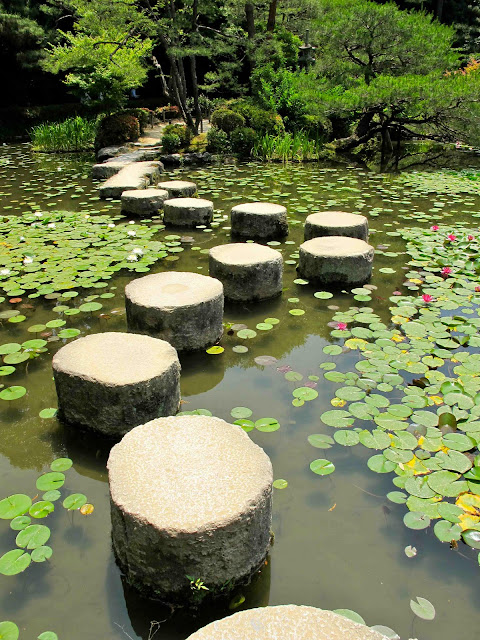Yesterday I went on a marathon walk around Kyoto, a city full of shrines and their gardens. Unlike nearly every other city in Japan, Kyoto was fortunate not to be firebombed to ashes by the U.S. during WW2 (they don't teach us that in school). The Shinto Heian Shrine is relatively young, built in 1895 to commemorate the 1100th year since the founding of Kyoto. It has numerous buildings all painted vermilion, a color that was apparently first derived from the application of clay (see more about vermilion below). It also has a garden so beautiful you walk around in a daze of blissful revery---it was designed by Ogawa Jihei (1860-1933), one of Japan's great gardeners.
the main gate
Had Monet been here he would have called for his paints.
Note all the Japanese women carrying parasols! It was in the high 80's.
a prayer "shrub"
Stepping stones that form the tail of a dragon. The island forms the dragon's body.
These rope decorations hang over doorways in many of the shrines and are called shimenawa (the rope) and shime (the strips of white paper). They are meant to ward off evil spirits and the white paper symbolizes purity in the Shinto faith. DIY?
the inherent duality of life?
Heian's Torii, one of the largest in Japan, is the traditional gateway to a Shinto shrine marking the transition between the sacred and the profane.

















